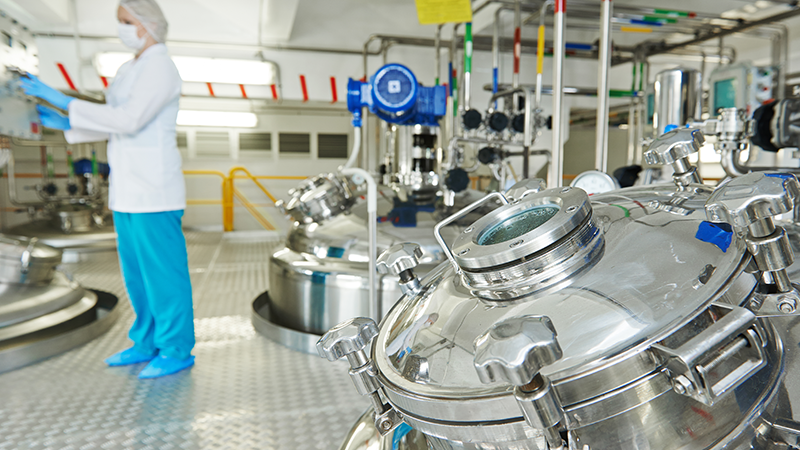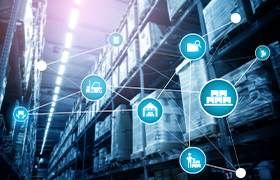
Digging Deeper into the Advantages of Continuous Manufacturing


Abstract:
Biopharmaceutical manufacturing industry has at times considered the advantages of continuous processing over batch processing. Continuous operations are known to provide flexibility and process intensification along with higher productivity and lower labor requirements. In recent times, there has been an increase in the interest for continuous manufacturing. Several companies including contract manufacturers have included perfusion or continuous manufacturing in their recent expansions.
Biopharmaceutical drugs manufactures have stated that continuous renewal of culture medium and harvesting of the product have proven successful in improving cell viability and reducing equipment footprint. Progress in perfusion culture is expected to take place in near future. This might help manufacturers reduce the cost of manufacturing, which will result in lower drug price for consumers.
In this article we will discuss how this technology is slowly growing and how the implementation would add value to biopharmaceutical drug manufacturers
Continuous Manufacturing
-
Continuous manufacturing is a process which is true to its name, where materials are simultaneously charged and discharged from the process. However, in batch manufacturing all material are loaded before the start of process and discharge at the end of process
-
Some of the benefits of continuous manufacturing include reduced bioreactor size, possible use of single use bioreactors (SUBs), standardized size and simplified process
There may be certain disadvantages with the use of continuous manufacturing, but they are outnumbered by the advantages that the process has to offer. Certain disadvantages are listed below
-
There may be considerably longer waiting times between single process steps
-
Quality of the product cannot be measured at every stage of development. Quality during the process is measured by in process sampling/control and towards the end by end product testing
These are some of the major disadvantages that are looked upon as road blocks in a continuous manufacturing process. All this will be negligible when it comes to the steady, continuous and flexible results those continuous manufacturing offers
Contract Manufacturers for Continuous/Perfusion Manufacturing
When it comes to continuous manufacturing in upstream processing, perfusion cell culture is the preferred manufacturing platform widely used in the industry.
Listed below are some of the major contract manufacturers
|
Suppliers |
Manufacturing Location |
Perfusion Manufacturing Capability |
Manufacturing Capacity |
Regulatory Certification |
|
Lonza |
Portsmouth, NH USA |
|
> 3000 L |
US FDA, MHRA, EMA, Korean FDA, Turkish MOH, Health Canada |
|
Novasep |
Belgium |
|
1000 L |
cGMP |
|
Creative-Biolabs |
USA |
|
up to 5000L |
cGMP, US FDA |
|
Samsung BioLogics |
South Korea |
|
15,000 L (expected to be operational by Q4 2018) |
US FDA, EMA, PMDA, MFDS |
|
Abzena/TCRS |
USA |
|
500 L (2000 L expected by Q1 2019) |
cGMP |
|
Syngene |
India |
|
NA |
cGMP, US FDA |
Nowadays, several pharma companies have been looking out for CMOs who can offer perfusion manufacturing. But most CMOs do not have this on their list of services. Companies who do have perfusion manufacturing capabilities are not very much experienced and have less commercial experience in this space. In the light of such events CMOs are also expanding their perfusion manufacturing to meet the demand.
Some of the recent capacity expansions involving perfusion manufacturing are listed below:
|
Company |
Location |
Capital Involved |
News |
|
WuXi Biologics |
Singapore |
USD 60 million |
WuXi Biologics has announced plans to add a USD 60 million clinical and commercial biologics manufacturing in Singapore. When operational, the site will boast 4,500 L biomanufacturing capacity comprised of two 2,000 L traditional fed-batch and one 500 L perfusion based continuous processing bioreactors |
|
Thermo Fisher/ Patheon |
USA |
USD 50 Million |
Thermo Fisher Scientific has invested USD 50 million in its St. Louis site, to continue expansion of the company’s global network of biologic drug substance capabilities for clinical and commercial supply. The St Louis site currently provides process development, clinical cGMP manufacturing, and commercial manufacturing using both fed batch and perfusion processes |
|
Sartorius Stedim Biotech and Repligen |
Germany |
Partnership |
Sartorius Stedim Biotech (SSB) announced that it will integrate Repligen’s Xcell ATF cell retention control technology into SSB’s BIOSTAT STR large-scale single-use bioreactors to create novel perfusion-enabled bioreactors. The collaboration plans to create a single control system for 50 L to 2,000 L bioreactors used in perfusion cell culture applications |
It is estimated that perfusion manufacturing offers cost savings over the batch manufacturing process. For instance, the perfusion bioreactors required significantly less inoculum per cartridge compared to stirred tank bioreactors. Similarly there are several options in downstream bioprocessing where continuous bioprocess operations could result in cost savings
Perfusion Manufacturing – Process Economics
Given below is an analysis using a process economics model show varied outcomes for bioprocessing. The results depend on active pharmaceutical ingredient (API) volume, manufacturing strategy configuration, and whether capital expenditures (CAPEX), COGS, or both were the highest priority
|
Configuration |
100 Kg/year |
500 Kg/year |
2000 Kg/year |
|||
|
CAPEX |
COGS |
CAPEX |
COGS |
CAPEX |
COGS |
|
|
USP: Feb-batch DSP: Batch |
USD 26.1 million |
USD 107/g |
USD 43.8 million |
USD 48.4/g |
USD 146.9 million |
USD 36.2/g |
|
USP: Perfusion DSP: Batch |
USD 17.3 million |
USD 127.4/g |
USD 29.7 million |
USD 59.9/g |
USD 101.1 million |
USD 46.7/g |
|
USP: Feb-batch DSP: Continuous |
USD 23.6 million |
USD 97.9/g |
USD 36.2 million |
USD 46.9/g |
USD 100.8 million |
USD 32.6 /g |
|
USP: Perfusion DSP: Continuous |
USD 19.7 million |
USD 133.6/g |
USD 26.4 million |
USD 54.5/g |
USD 60.9 million |
USD 40.7 /g |
Sources: www.genengnews.com
Note: Three scales of a monoclonal antibody process are modeled here, representing the range typically seen in manufacturing. Modeling is based on monoclonal antibody titers typical for each upstream mode (5 g/L for fed-batch, and 1.2 g/L for perfusion)
Conclusion
When there is a need for more cost savings companies try to experiment with all the available options. This is case where manufacturers have looked at the continuous manufacturing option. Some amount of progress has been made continuous manufacturing especially in upstream segment with the increase in uptake of cell culture operated in perfusion mode.
In perfusion manufacturing culture medium is constantly renewed and the product has been successfully harvested with increased cell viability and reducing equipment footprint. Owing to all these advantages that continuous manufacturing offers, some manufacturers and CMOs have taken the shift. It is highly probable that many other companies will follow this trend in near future. All this will in turn impact the final drug and its price.
Related Insights:
View All
Get more stories like this
Subscirbe for more news,updates and insights from Beroe







